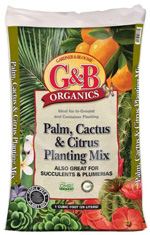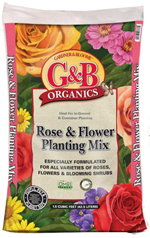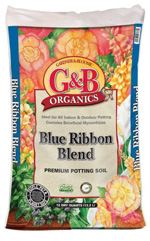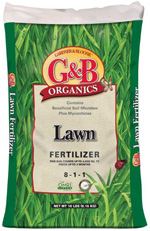|

|
 | Featured Quote: "We can complain because rose bushes have thorns, or rejoice because thorn bushes have roses." |

|
|
We will be closed on Friday, July 4th, and resume our normal operating hours on Saturday, July 5th from 8:00-5:30. |

IN CONGRESS, JULY 4, 1776The unanimous Declaration of the thirteen united States of America
We hold these truths to be self-evident, that all men are created equal, that they are endowed by their Creator with certain unalienable Rights, that among these are Life, Liberty and the pursuit of Happiness. |
 |
If you’ve ever been lucky enough to visit our 50th state, you know first-hand of the delight of the traditional welcoming ceremony. Beautiful island women in Hawaiian garb greet you at the airport, placing wreaths of fragrant flowers around your neck. For the entirety of your stay, this aroma envelopes you wherever you travel. For the most part, the leis are woven of plumeria, also known as Frangipani, and the plumeria smells like no other plant in the world; each color has its own unique fragrance. Some smell sweet, while other colors carry the perfume of jasmine, peaches, or citrus. The plumeria is native to the Caribbean, the Pacific islands, South America and Mexico, where they can grow to a height of 30 to 40 feet. In slightly more temperate climes, they will grow to be large shrubs or small trees. However, our northern friends need not envy in vain; potted, they will provide fantastic color and aroma for decks, patios, or balconies. Once the temperatures drop below 65 degrees, bring your potted plumeria indoors, and place it in a sunny, southern window, supplementing with a grow light. Be careful to not overwater, and as the weather warms up, repot your plumeria one size up and gradually return it to the outside conditions in which it flourished the previous year. This potted wonder can turn a northerner’s glass-enclosed porch into a scent-filled solarium! To welcome this gem into your life, begin with cuttings from mature trees. Let it “scab” (or dry out), for 2-3 weeks, then gently water it and allow it to dry out again before further watering; plumeria must have roots in order to absorb water. Cuttings are usually established within 90 days. Plant the cuttings 4” deep in a porous, sandy, well-draining potting soil; to be true to its Hawaiian origins, add volcanic cinder lava rock to the soil. Once your cutting is established, you will be given the gift of blooms in two years; however, a previously rooted plumeria should bloom the first year as it is already established. Use a slow release fertilizer to ensure plentiful blooms, and although it prefers full sun, this drought-resistant marvel of a plant will tolerate partial shade. A plant that will transport you to heavenly havens, and available to all of us, no matter where we reside. |

|
Perhaps one of the most beautiful flowers around is the tuberous begonia. There are many varieties, from single or double flower, ruffled-petal flowers, to camellia- or carnation-form flowers. There are even pendulous forms perfect for hanging baskets. Their colors are extremely vivid, ranging from reds and red-orange to orange, yellow, white and hot pink; there are even bi-colored varieties. The tuberous begonia is a highly versatile plant whose almost fluorescent flowers are wonderful in flowerbeds, patio containers, window boxes or even hanging baskets. Tuberous begonias will bloom for you all summer long and into early fall. They will thrive in shadier areas where few other flowers with long bloom times and showy flowers will even grow. Although they are not frost hardy, they can be pulled out of the ground as they start to go dormant in fall, then cleaned off and stored in a cool, dry location over winter and replanted in spring after any danger of frost is gone. Handled correctly, they can provide years of beauty in the garden. They should be planted in soil that maintains moisture, but also drains (no standing water). If you plant into the ground, you may need to amend first. For best results in containers, be sure to plant using a high-quality potting soil. These begonias like indirect light or dappled shade locations and need to be kept moist with regular watering. Please take care not to let them dry out. To maintain their vibrant blooms, feed regularly. We have spectacular varieties available right now, just waiting for a home in your garden. Visit us soon for the best selection. |
 |
|
The Fourth of July is almost here. It's not too late to create an Independence Day planter in red, white, and blue! For reds: try verbena, petunia, Sweet William, or salvia. For blues: bachelor's button, salvia, petunia, or lobelia. For whites: alyssum, petunia, candytuft. Now...on to the July tasks in your gardens! Planting Tropical plants are popular now and can be brought into any garden, whether tropical, cottage, or country themes. Flowering shrubs include hibiscus, brugmansia (Angel's Trumpet), canna, bougainvillea, and vines such as passion flower or Burmese honeysuckle. Large-leaf evergreens include philodendrons, xanadu, tree ferns, and gingers. You can even include abutilon, which comes in several colors including red, yellow, orange, and pink. Harvesting Maintenance It's feeding time for your flowerbeds, roses, vegetables and warm-season lawns. Come in and ask one of us which fertilizers will be best for each of your plant needs. We offer a wide selection of fertilizers: multipurpose, organic, and slow release. You can do some pruning, even though it's summertime. Fuchsia 'Gartenmeister,' gaura, and salvias will look much better if cut back by about 1/3. Oh...and your catmint, too. If you forgot to increase your watering from the spring months, you must do so now. Trees (non-citrus) and shrubs will need deep soaks once each month in the summer, and regular irrigation in between. Citrus and your flowerbeds need regular weekly watering. Those of you growing tomatoes and peppers, watch for tomato hornworms. They will need to be hand-picked from your foliage. As usual, mulch, mulch, mulch! We will always tell you to mulch. This does not mean mound up the mulch to 5 feet. It means continue to replenish the mulch and maintain a 2-4 inch blanket over your soil. So when you hear us singing the MULCH song, you know just what we mean! And last, but not least, have a very Happy Independence Day! |

|
If you have plants that suddenly keel over in the middle of the night, you might have cutworms. Closer inspection will usually reveal that the main stem has been severed from the roots. The adult cutworms are night-flying moths that lay eggs on grass tips or on the soil next to lawn or plant stems in the fall. In the spring, the larvae emerge and begin developing, feeding on leaves, buds and soft plant stems as they mature. They get their name from their habit of "cutting" off a seedling at ground level by chewing through the stem. A number of species are involved, so identification is most easily done by identifying the damage. Most cutworms will roll up in a ball if disturbed. Natural remedies include pouring a ring of molasses around the plants, and placing foil or cardboard collars around your plants. Collars should penetrate at least an inch down and up several inches. Also helpful are beneficial nematodes or a pesticide.
|
 |
|
How often should I water the plants in the ground in my garden? Answer: As a rule, the hotter it gets, the more you will have to water. In the cooler months, you only water between periods of extended dry weather or high wind, which can also stress or dry a plant out. When it is hot, increase the length of time you water your plants, not the frequency of watering. Most plants need to be watered at least twice a week; new plants that have yet to be established should be checked every other day. Remember that checking does not necessarily mean watering! We recommend that the top couple of inches of ground dry out between waterings. Using drip irrigation is the most effective method. It is also important to group plants with similar watering needs together. If a plant is too dry, the foliage will have a wilted appearance or begin to burn on the outside leaf tips. If a plant is too wet, it will lose its luster and quickly drop faded leaves, starting from the inside of the plant and working its way to the leaf tips. Make sure not to use soft water on any plants. The salt in the water can burn or kill plants. Fluoridated water is fine, because your plants will look better when they smile. |

| What You'll Need:
Step by Step:
Yield: 4 servings |
 click here for a printer friendly version of this page
click here for a printer friendly version of this page |
Written content © 2004-2014 Garden Partners LLC, or respective authors. All Rights Reserved. Privacy Policy. All written content contained in this site is protected by United States copyright law and may not be reproduced, distributed, transmitted, displayed, published, or broadcast without prior written permission of Garden Partners, LLC. You may not alter or remove any trademark, copyright or other notice from copies of the content. Would you like a newsletter like this for your nursery or garden center? Please feel free to look at what we have to offer and contact us for your garden center marketing solutions. |










 hen in the Course of human events it becomes necessary for one people to dissolve the political bands which have connected them with another and to assume among the powers of the earth, the separate and equal station to which the Laws of Nature and of Nature's God entitle them, a decent respect to the opinions of mankind requires that they should declare the causes which impel them to the separation.
hen in the Course of human events it becomes necessary for one people to dissolve the political bands which have connected them with another and to assume among the powers of the earth, the separate and equal station to which the Laws of Nature and of Nature's God entitle them, a decent respect to the opinions of mankind requires that they should declare the causes which impel them to the separation.